EBERLE 52527 Handleiding
EBERLE
Thermostaat
52527
Bekijk gratis de handleiding van EBERLE 52527 (4 pagina’s), behorend tot de categorie Thermostaat. Deze gids werd als nuttig beoordeeld door 31 mensen en kreeg gemiddeld 4.9 sterren uit 16 reviews. Heb je een vraag over EBERLE 52527 of wil je andere gebruikers van dit product iets vragen? Stel een vraag
Pagina 1/4

1. Verwendungsbereich
• Fußbodendirektheizung
• Fußbodenspeicherheizung
• Freiflächenheizung
• Klimatechnik usw.
2. Montageanleitung
Der Deckel (14) Uhrenabdeckung muß nach oben abgehoben wer-
den. Nach Abziehen des Einstellknopfes (13) für die Tagtemperatur
(1) und Lösen der Befestigungsschraube (3) kann das Oberteil in
Richtung der Uhr hochgeklappt und abgenommen werden.
Die Montage des Fußbodenheizungsreglers kann auf einer handels-
üblichen Unterputzdose mit waagrechten Befestigungslöchern oder
auch direkt auf der Wand erfolgen.
3. Anschlußschaltbild
Unbedingt technische Daten auf dem Typenschild im Deckel des
Gerätes beachten. Anschluß nach folgendem Schaltbild vornehmen:
Abisolierte Drähte in entsprechende Schraubklemmen nach Schalt-
bild einführen und festschrauben,. Nach vollendetem Anschluß
Gehäuseoberteil wieder aufsetzen und mit Schraube (3) festschrau-
ben sowie Knopf (13) für Tagtemperatur aufstecken.
4. Schaltzeiteinstellung, Temperaturabsenkung
für Tagesprogramm Typ 525 27
Zunächst muß der Deckel (14) nach oben abgenommen werden.
Nachttemperatur „ein“= blauer Steckreiter
Nachttemperatur „aus“ = roter Steckreiter
Werkseitig sind die Reiter auf 22.00 Uhr „ein“ und 6.00 Uhr „aus“ ein-
gesteckt. Eine Änderung dieser Zeiteinstellung ist durch Versetzen
der Steckreiter möglich. Steckreiter werden nach oben abgezogen
und an die jeweiligen Schaltpunkte wieder eingesteckt.
für Wochenprogramm Typ 52528
Der Vorgang bzw. die Technik entspricht dem Tagesprogramm. Die
Wochentage sind durch Abkürzungen gekennzeichnet. Beginnend
bei Mo = Montag, Di = Dienstag, Mi = Mittwoch, Do = Donnerstag, Fr
= Freitag, Sa = Samstag, S0 = Sonntag.
Die kleinste Zeitmarkierung ist 1 Stunde.
5. Uhrzeiteinstellung
für Tagesprogramm
Die Einstellung der Uhrzeit kann nur bei abgenommenem Deckel (14)
erfolgen. Die Zeiteinstellung geschieht durch Drehen des Minutenzei-
gers im Uhrzeigersinn. Dabei ist zu beachten, daß die Markierung
(11) neben der Tagesscheibe (8) die eingestellte Zeit auf der Tages-
scheibe anzeigt.
Beispiel:
Ist-Zeit = 15.00 Uhr
Drehen des Minutenzeigers bis die Zahl 15 der 24-Stunden-
Scheibe an der Markierung (11) ist.
für Wochenprogramm
Die Einstellung der Uhrzeit kann nur bei abgenommenem Deckel (14)
erfolgen. Die Zeiteinstellung geschieht durch Drehen des Minutenzei-
gers im Uhrzeigersinn. Dabei ist zu beachten, daß die Markierung
(11) die eingestellte Zeit aus der Wochenscheibe (8) anzeigt. Dabei ist
sowohl der Wochentag als auch die 24-Stunden-Einteilung zu
berücksichtigen.
Beispiel:
Ist-Zeit = 15.00 Uhr – Dienstag
Drehen des Minutenzeigers bis die Zahl 15 und Di auf der Wo-
chenscheibe an der Markierung (11) ist.
6. Tag- und Nachttemperatur
Mit dem Einstellknopf (13) wird die Tagtemperatur, mit dem Einstell-
poti (2) wird die Nachttemperatur eingestellt.
7. Störungen – Schaltuhr
Keine Nachtabsenkung: Sind die Steckreiter zeitlich richtig aufge-
steckt? Ist bei 2 oder mehr Heizprogrammen die Steckreiter-Reihen-
folge richtig – rot-blau – rot-blau?
Ist die Position am Einstellknopf (2) richtig?
8. Einengen des Temperatur-Einstell-
bereiches der Tagtemperatur
Werkseitig ist der Raumtemperaturregler auf den maximalen Einstell-
bereich von 1 bis 6 eingestellt.
Siehe Bild 2.
Im Einstellknopf befinden sich 2 Einstellringe, allerdings mit einem
Einstellbereich von 5 bis 30°C. Bei der Bereichseinengung bitten wir
die Einstellung gemäß nachfolgendem Diagramm vorzunehmen.
Mit den Einstellringen können Sie den Temperatur-Einstellbereich be-
liebig einengen, also z.B. auf den Bereich von 3 bis 5.
Bereichseinengung im Einstellknopf
8.1 Einstellvorgang
• Wählen Sie die Einstellgrenzen:
Beispiel:
oben: 5
unten: 3
• Achtung!
Zuerst Einstellknopf ungefähr auf Mitte des gewünschten Ein-
stellbereiches stellen.
Beispiel:
Mitte zwischen 3 und 5 ist ●
• Jetzt erst Einstellknopf abziehen.
• Einstellring max in obere Temperaturgrenze einstellen:
Beispiel: 5
Drehen gegen den Uhrzeigersinn. Es gelten die außenliegenden
Zahlen der Skala!
Kugelschreiberspitze in Loch einsetzen und max Ring links her-
um auf 25°C (s. Diagramm) drehen (max-Skala). Bild 3.
• Einstellring min auf untere Temperaturgrenze einstellen:
Beispiel: 3
Drehen im Uhrzeigersinn. Es gelten die inneren Zahlen der Skala!
Kugelschreiberspitze in Loch einsetzen und min Ring rechts her-
um auf 15°C (s. Diagramm) drehen (min.-Skala). siehe Bild 4.
• Einstellknopf aufsetzen:
Dabei muß der Zeiger ungefähr auf der Mitte des neuen Einstell-
bereiches zeigen; siehe Punkt 2.
Beispiel: ●
9. Programmschalter
Édauernd gewählte Temperatur
Ñdauernd gewählte Nachttemperatur
>Automatische Umschaltung zwischen Tag- und Nachttem-
peratur
Einstellbereich Regler
Fühlertemperatur
5
10
15
20
25
30
°C
123 56
10 20 30 50 6040 °C
10. Technische Daten
Regler
Typ Tagesprogramm Wochenprogramm
Bestellbez. FRe-UTQ 52527 FRe-UTQ 52528
EDV-Nr. 10…60°C 052527141860 052528141860
Netzversorgung Nennspannung bei 50 Hz 230V 230V
Toleranzbereich 195…253V 195…253V
Leistungsaufnahme ca. 7VA ca. 7VA
Schaltstrom cos ϕ1 16 A cos ϕ1 16 A
cos ϕ0,6 4 A cos ϕ0,6 4 A
Ausgang Relaiskontakt 1 Schließer 1 Schließer
Temperaturbereich 10…60°C10…60°C
Bereichseinengung f. Tagtemperatur im Einstellknopf im Einstellknopf
Schalttemperaturdifferenz 0,8K ± 0,5K 0,8K ± 0,5K
Schaltzeiteinstellung alle 10 min. möglich alle Stunde möglich
Kürzeste Schaltzeit Ein/Aus 30 min. 3 Stunden
Schaltreiter 6 (3 x Ein/Aus) 18 (9 x Ein/Aus)
Schaltuhr Quarzwerk auf Leiterplatte steckbar und auf Grundplatte verschraubt
Gangreserve Nach Spannungsausfall größer 150 Stunden (Ladezeit ca. 140 Std.)
Signallampe „Heizen“serienmäßig Serienmäßig
Schutzart des Gehäuses IP 30 nach DIN VDE 0470 T1 IP 30 nach DIN VDE 0470 T1
Geräteschutzklasse II nach VDE 0631 II nach VDE 0631
Feuchteklasse F nach 40040 F nach 40040
Gewicht ca. 180 g ca. 180 g
Lagertemperatur -25…70°C -25…70°C
Umgebungstemperatur 0…+40°C0…+40°C
Fernfühler
Bestellbezeichnung F 193720
EDV-Nr. 000193720001
Fühlerelement NTC
Fühlerkabel PVC – 2 x 0,50 mm2
Länge 4 m
Schutzart IP 68 nach DIN VDE 0470 T1
Umgebungstemperatur -25…70°C
Fühlerkennzeichnung weiß
Das Fühlerkabel kann bei Bedarf mit einem 2-adrigen Kabel mit einem Durchschnitt von 1,5 mm2bis auf 50 m verlängert werden, ohne die Genauig-
keit des Reglers zu beinträchtigen.
Fühlerkennwerte
Fühlertemperatur 10…60°C (kΩ) (V)
10°C 66,8 3,7
20°C 413 3,4
30°C 26,3 2,9
40°C 17,1 2,5
50°C 11,3 2,0
60°C 7,5 1,5
Die Ω-Werte können nur bei abgeklemmten Fühler gemessen werden, die Spannung mit Meßgerät Ri>1MΩnur am Fühler bei Betrieb am Netz.
Achtung! Im Fehlerfall kann Netzpotential am Fühler anliegen!
11. Maßzeichnungen
Regler
U 468931041458 K
Bedienungsanleitung
für Fußbodenheizungsregler
mit Quarzuhr
Typ 52527 und 52528
Achtung!
Bei Austausch mit Regler (ohne Uhr, Typ 525 21, unter Verwen-
dung des alten Fühlers (Farbkennz. schwarz) muß R 18 unwirk-
sam gemacht werden (einseitiges durchzwicken eines Anschluß-
beinchens). Lage siehe Bild 1.
Der Regler darf nur durch einen Fachmann installiert bzw. einge-
setzt werden. Dabei sind die bestehenden Sicherheitsvorschriften
zu beachten.
Die Möglichkeiten der Anwendung und Dimensionierung insbe-
sondere die techn. Daten ergeben sich aus unseren Prospektanga-
ben.
Die Fußbodenheizungsregler sind gemäß VDE 0875 und EG-Richt-
linie 82/499/EWG nach Funkstörgrad N entstört.
Werden die Fußbodenheizungsregler mit anderen Geräten in einer
Anlage verwendet, so ist darauf zu achten, daß die ganze Anlage
keine Funkstörung verursacht.
Der Anschluß muß den einschlägigen Installationsvorschriften
entsprechen.
Zur Beachtung!
Bei Arbeiten am Lastkreis ist grundsätzlich die Netzspan-
nung abzuschalten (z.B. Sicherung entfernen).
Bei Fühlerunterbrechung oder Fühlerkurzschluß zieht
der Relaiskontakt nicht an; auch nicht bei Ausfall der Be-
triebsspannung. Der Regler ist selbstüberwachend.
Bild 1
1 Einstellpoti bzw. -skala für Tagtemperatur
2 Einstellpoti bzw. -skala für Nachttemperatur
3 Befestigungsschraube für Deckel
4 Lampe „Heizen“
5 Schiebeschalter Programmwahl
6 Laufkontrolle
7 Minutenscheibe
8 24-Stunden- oder Wochenscheibe
9 Steckreiter
10 Ersatzsteckreiter
11 Markierung für Uhrzeit-Einstellung
12 Anzeige Schaltzustand
13 Einstellknopf Sollwert (im Innern des Knopfes)
14 Deckel
15 2 Schrauben (z. Uhrbefestigung)
Bild 2
Mit dieser Einstellung wird der Regler geliefert
Voller Bereich 1…6
Bild 4
Rastring min eingestellt in Pfeilrichtung auf
15°C (siehe Diagramm)
Bild 3
Rastring max eingestellt in Pfeilrichtung auf
25°C (siehe Diagramm)
K
EBERLE Controls GmbH · Postfach 130153 · D-90113 Nürnberg
Klingenhofstraße 71 · D-90411 Nürnberg/Germany
Telefon 0911/5693-0 · Telefax 0911/5693-214
– Irrtum und Änderungen vorbehalten –
Fühler

1. Use and Application
Temp. Range 10…60°C
• direct floor heating
• floor storage heating
• surface heating
• air conditioning etc.
2. Installation instructions
The cover (14) of the timer housing should be lifted up. After remo-
ving the setting knob (13) for the daytime temperature setting (1) and
loosening the fixing screw (3) the upper part can be turned in the di-
rection of the timer and removed.
The floor heating thermostat can then be fitted to any commercially
available flush-mounted socket with horizontal fixing holes or alter-
natively directly onto the wall. When selecting a suitable place for mo-
unting, draughts and warm air currents should be avoided, and you
should allow a free circulation of air. Recommended mounting height:
approx 1.5m
3. Wiring Diagram
Important Notice:
Please read carefully the technical data on the inside of the cover of
the equipment.
Insert insulated wires in corresponding screw terminals and connect
as shown in the wiring diagram. Once the electrical connection has
been made replace the upper housing and screws in (3), and replace
the daytime temperature setting button (13).
4. Changeover setting. Temperature set-back
For daily programme Model 52527
First lift off cover (14).
Set-back temperature ”on“= blue tappet
Set-back temperature ”off“ = red tappet
The tappets are factory set to come at 22.00 and switch off at 06.00.
These times can be changed if required by adjusting the tappets. The
tappets are pressed upwards and can be moved around the dial until
the disered switching times are set.
For the weekly programme Model 52528
Procedure is as for setting the daily programme. Note the following
abbreviations for the days of the week:
Beginning with Mo = Monday, Di = Thuesday, Mi = Wednesday, Do =
Thursday, Fr = Friday, Sa = Saturday, So = Sunday.
The minimum time setting is one hour.
5. Setting the timer
For the daily programme
To set the timer first remove the cover (14). Set the time by turning
the minute hand clockwise. Take care to ensure that the indicator ar-
row (11) next to the day dial (8) is showing the setting time on the
dial.
Example
Setting time = 15.00
Turn the minute hand until the number 15 on the 24 hour dial is at
the indicator arrow.
For the weekly programme
To set the timer first remove the cover (14). Set the time by turning
the minute hand clockwise. Take care to ensure that the indicator ar-
row (11) is showing the set time on the week dial. Take care that the
correct day of the week as well as the time is indicated.
Example:
Setting time = 15.00, Tuesday
Turn the minute hand until the number 15 and Di are the indicator
arrow on the week dial.
6. Recommended day and night temperature settings
The temperature, which you can require in the living area, is set by
means of the daytime temperature setting knob (13). A setting on the
red point is recommended, corresponding to a room temperature of
approx. 20 deg C. The night set-back temperature can be set by me-
ans of the adjustable potentiometer (2). It is recommended to set a
set-back temperature of approx. 3 to 4 K. Naturally other settings are
possible, if required.
7. Problems – Timer
No night set-back: are the switches set for the correct time? Is
the setting sequence correct for 2 or more heating programmes
– red-blue – red-blue?
Is the position on the setting knob correct?
8. To reduce the setting temperature range of the
daytime temperature
The room temperature setting knob is factory set on the Range 1…6.
See illustration 2. On the underside of the setting knob there are 2 re-
stricting rings, with a setting range of 5…35 deg C. When narrowing
the setting range please do so in accordance with the following dia-
gram.
Reducing the range in the setting knob.
Using the restricting rings you can narrow the setting range as desi-
red, for example within the range 3 to 5
Range stops inside setting knob
8.1 Setting procedure
• First select the desired limits:
Example Upper: 5 Lower: 3
• Caution:
First switch setting knob to approx. the middle of the desired
setting range.
Example:
Mid point of 3 and 5 is ●
• Then remove the setting knob to ● and remove.
• Set red setting ring to upper temperature limit:
To set upper limit to 5
Turn anti-clockwise. Note: instructions refer to the outer num-
bers of the scale.
Insert tip of ball point pen into hole and turn red ring left on to 25
deg C (max scale) (see diagram). Illustration 3.
• Set the blue setting ring to lower temperature limit:
To set lower limit to 3.
Turn clockwise. Instructions refer to the inner numbers of the
scale.
Insert tip of ball point pen and turn blue ring onto 15 deg C. (min
scale) (see diagram). See illustration 4
• Replace setting knob with setting at ●.
The indicator should now show the middle of new setting range:
see Point 2.
9. Programme selector switch
Éselected daytime temperatur ”on“
Ñselected night-time temperatur ”on“
>automatic changeover between day- an night temperature
setting range of thermostat
Sensor temperature
5
10
15
20
25
30
°C
123 56
10 20 30 50 6040 °C
10. Technical Data
Thermostat
Typ Daily Programme Weekly Programme
Order description FRe-UTQ 52527 FRe-UTQ 52528
Computer ref No. 10…60 deg C 052527141860 052528141860
Voltage 230V 230 V
195…253V 195…253V
Switching current approx. 7 VA approx. 7VA
Current cos ϕ1 16 A cos ϕ1 16 A
cos ϕ0,6 4 A cos ϕ0,6 4 A
Output relay contact 1 N/O 1 N/O
Temperature range 10…60 deg C 10…60 deg C
Range reduction for daytime temperature in setting knob in setting knob
Setting temp differential 0,8K ± 0,5K 0,8K ± 0,5K
Changeover setting every 10 mins possible every hour possible
Shortest changeover time on/off 30 mins 3 hours
Tappets 6 (3 x on/off) 18 (9 x on/off)
Timer Quartz clock screwed to base plate
Battery reserve After voltage failure greater than 150 hours (Loading time 140 hours)
Signal lamp ”heating“Standard Standard
Housing protection type IP 30 (DIN VDE 0470 T1) IP 30 (DIN VDE 0470 T1)
Apparatus protection class II to VDE 0631 II to VDE 0631
Humidity class F to DIN 40040 F to DIN 40040
Weight approx. 180 g approx. 180 g
Storing temperature -25…70 deg C -25…70 deg C
Operation temperature 0…+40 deg C 0…+40 deg C
Remote Sensor
Order description F 193720
Computer ref No. 000193720001
Sensor element NTC
Sensor cable PVC – 2 core x 0,50 mm2
Length 4 m
Protection class IP 68 to DIN VDE 0470 T1
Ambient temperature -25…70 deg C
Sensor colour code white
The sensor cable can be lengthened to 50 m if required with a two wire cable with a diameter of 1,5 mm2, without affecting the accuracy of the sensor.
Sensor specification and characteristics
Sensor temperature 10…60°C (kΩ) (V)
10 dec C 66,8 3,7
20 deg C 413 3,4
30 deg C 26,3 2,9
40 deg C 17,1 2,5
50 deg C 11,3 2,0
60 deg C 7,5 1,5
The resistance values can only be measured when sensor is connected, the current only flows when the sensor is in operation when connencted to
circuit.
Warning:In case of failure note mains current can be present at the sensor!
11. Dimensions
Contol unit
K
Operating Instructions
for floor heating thermostat
with quarz timer
Model 52527 and 52528
Caution
If replacing an existing thermostat, Model 52521, using the old
sensor (Colour Code:black) R18 must be disconnected (by coun-
ting one leg of the resistor).
Caution
The unit should only be installed and set up by an qualified en-
gineer. The enclosed safety precautions should be observed.
Other application options, dimensions & in particular technical
specifications are given in our information sheet.
The floor heating thermostats are fitted with suppressors in accor-
dance with VDE 0875-A2 and EEC Guidelines 82/499/EWG rela-
ting to radio inteference grade N.
If the unit is used in combination with other appliances, care
should be taken in case any of the appliances causes radio interfe-
rence. Installation must be in accordance with the appropriate re-
gulations.
Caution:
• The switch in the thermostat breaks the circuit but not the hea-
ting resistance
• If an auxiliary circuit is used the mains voltage should be swit-
ched off (remove fuse)
• In the event of a sensor disconnection or sensor short circuit the
relay contact is not engaged; nor in the event off an appliance
breakdown. The Thermostat is self monitoring.
Fig. 1
1 Set scale for day temperature
2 Set scale for night temperature
3 Fixing screw for cover
4 Lamp ”Heating“
5 Slide switch program selection
6 Control of clock run
7 Minute disc
8 Daily or weekly disc
9 Tappets
10 Reserve tappets
11 Mark for time set
12 Indicator of switching operation
13 Setting knob
14 Cover
15 2 fixing screws (for clock movement)
Fig. 2
Delivered with a range of 1 to 6
Fig. 4
Ring min. adjusted in direction of arrow to 15 °C
Fig. 3
Ring max. adjusted in direction of arrow to
K
EBERLE Controls GmbH · Postfach 130153 · D-90113 Nürnberg
Klingenhofstraße 71 · D-90411 Nürnberg/Germany
Telefon 0911/5693-0 · Telefax 0911/5693-214
Errors possible
Sensor

1. Domaine d’utilisation
Thermostat de 10 à 60°
• chauffage direct par le sol
• chauffage de dalle par accumulation
• chauffage de dalles extérieures
• climatisation
2. Montage
Retrier le couvercle 14 de la montre. Après avoir oté le bouton de
réglage et dévissé la vis de fixation, on peut basculer le couvercle vers
le haust, du côte de la montre et le retirer.
Le thermostat peut être monté soit sur um boîtier encastré ou directe-
ment sur le mur.
L’emplacement du thermostat sera choisi de manière à éviter les cou-
rants d’air permanents ainsi que des apports de chaleur externes. Il
devra cependant être installé dans un lieu l’air circule librement, à
une hauteur d’environ 1,5 m.
3. Schéma de branchement
Respecter les caractéristiques indiquées à l’intérieur du boîtier.
Brancher comme suit:
Introduire la partie dénudée des câbles dans la borne correspondante
et bien serrer les vis.
Une fois le branchement réalisé, refermer le boîtier, serrer la vis de
fixation (3) et remettre en place le bouton de réglage (13).
4. Programmation de la température réduite
pour horloge jurnaliére type 52527
Retirer le couvercle (14)
Témperature réduite = cavalier bleu
Témperature normale = cavalier rouge
Le réglage d’usine est le suivant: réduit á 22 h, temérature normale à
partir de 6 h.
La modification se fait en déplaçant les cavaliers sur l’heure choisie
après les avoir retirés en tirant vers le haut.
pour horloge hebdomadaire type 52528
La procédure est la même que pour l’horloge jurnalierère; les jours
sont repérés par les abréviations suivantes:
Mo = Lundi; Di = Mardi; Mi = Mercredi; Do = Jeudi; Fr = Vendredi; Sa =
Samedi; So = Dimanche.
Le plus petit pas correspond à 1 heure
5. Réglage de la montre
montre journalière:
Retirer le couvercle 14. Tourner l’aiguille dans le sens des aiguilles
d’une montre. Vérifier la corrospondance entre l’heure et la position
du marquage sur le disque 8 avec le repère 11.
Exemple:
il est 15 heures.
tourner l’aiguille des minutes jusqu’à ce que le chiffre 15 soit en
face du repère 11.
montre hebdomadaire:
Retirer le couvercle. Tourner l’aiguille dans le sens des aiguilles d’une
montre. Vérifier que l’heure et le jour situés en face du repère 11
soient corrects.
Exemple:
Mardi 15 heures.
Tourner l’aiguille jusqu’à amener le chiffre 15 de la plage Di en
face du repère 11.
6. Réglages conseillés
A l’aide du bouton de réglage 13, on règle la température souhaitée.
Nous conseillons de régler sur le point rouge qui correspond à un bon
confort de température.
La température réduite est réglée par l’intermédiaire du potentiomèt-
re 2. Nous conseillons de la régler plus bas d’une ou deux graduati-
ons, ce qui correspond à environ 2,5 à 5 K de réduction.
7. Problèmes
Pas de réduction nocturne: les cavaliers cont-ils bien mis?
S’il y a plusieurs programmes, la succession des cavaliers est-elle
correcte? (rouge-bleu – rouge-bleu, …)
Vérifier la position du potentiomètre 2.
8. Blocage de la plage de réglage de règlage
de la température jour
La plage n’est pas limitée d’origine (réglage de 1 à 6).
On trouve à l’arrière du bouton 2 bagues crantées de réglage. La pla-
ge est de 5 à 35 °C. La correspondance entre chiffres et températur se
fait selon le diagramme suivant:
Limitation de la plage à l’arrieère du bouton
Grâce aux bagues, la plage peut être limitée à votre convenance, par
exemple entre 3 et 5.
Blocage de la plage sous la molette
8.1 Procédure de réglage
Exemple: limitation ente 3 et 5
• Attention!
Tout d’abord amener l’index du bouton de réglage en face de la
valeur médiane de la plage choisie
Ex.: le milieu de la plage 3 à 5 est le point.
• Ensuite seulement, retirer le bouton de réglage.
Réglage de la valeur maxi:
dans notre exemple: 5
En tournant dans le sens contraire des aiguilles d’une montre,
amener à l’aide d’une pointe le repère de la bague rouge sur la
valeur maxi souhaitée (chiffres extérieurs), soit sur 25°C con-
formément au diagramme. Voir Fig 3
Reglage de la valeur mini:
dans notre exemple: 3
En tournant dans le sens des aiguilles d’une montre, amener à
l’aide d’une pointe le repére de la bague bleue en face de la valeur
mini souhaitée (chiffres interérieurs), soit selon diagramme sur
15°C. Voir Fig 4.
9. Interrupteur de sélection des progrtammes
Étempérature jour
Ñtempérature nuit
>inversion automatique jour/nui
Plage de réglage du thermostat
Température de la sonde
5
10
15
20
25
30
°C
123 56
10 20 30 50 6040 °C
10. Caracteristiques techniques
Thermostat Programme journalier Programme hebdomadaire
Designation FRe-UTQ 52527 FRe-UTQ 52528
Réf. complète 10…60°C 052527141860 052528141860
Alimentation 230V, 50 Hz 230V, 50 Hz
195…253V 195…253V
Puissance absorbée env. 7VA env. 7VA
Intensité coupée cos ϕ1 16 A cos ϕ1 16 A
cos ϕ0,6 4 A cos ϕ0,6 4 A
Relais de sortie 1 contact Travail 1 contact Travail
Plage de température 10…60°C10…60°C
Blocage de la plage de temp. jour à l’arrière du bouton à l’arrière du bouton
Différential 0,8K ± 0,5K 0,8K ± 0,5K
Réglage des programmes par tranches de 10 mn par tranches d’1h
Prpgramme minimal 30 min. 3 h
Cavaliers disponibles 6 (3 xM/A) 18 (9 x M/A)
Horloge de programmation embrochable à quarz et visée sursocle
Réserve de marche supérieure à 150 h (durée de recharge env. 140 h)
Lampe-témoin ”cauffage“en série en série
Protection du boîter IP 30 (selon DIN VDE 0470 T1) IP 30 (selon DIN VDE 0470 T1)
Classe de protection II selon VDE 0631 II selon VDE 0631
Classe d’humiditéF selon 40040 F selon 40 040
Poids env. 180 g env. 180 g
Température de stockage -25 à 70°C -25 à 70°C
Température ambiante 0 à +40°C0 à +40°C
Sonde à distance
Désignation F 193720
Référence compléte 000193720001
Elément sensible CTN
Cable PVC – 2 x 0,50 mm2
Longueur de cable 4 m
Classe de protection IP 68 selon DIN VDE 0470 T1
Température ambiante -25 à +70°C
Coleur du capuchon blanc
Le câble peut être prolongé sans inconvénients jusqu’à 50 m par l’intermediaire d’un câble de section 1,5 mm2
Caracterisiques de la sonde
10 à 60°C (kΩ) (V)
10°C 66,8 3,7
20°C 413 3,4
30°C 26,3 2,9
40°C 17,1 2,5
50°C 11,3 2,0
60°C 7,5 1,5
Les valeurs ohmiques ne peuvent être mesurées que la sonde est débranchée, tandis que les tensions ne peuvent l’être que si le thermostat est sous
tension.
Attention! En cas de défaut de fonctionnement, la sonde peut se retrouver sous tension.
11. Encombrement
Thermostat
K
Notice de montage
Thermostat pour chauffage par
le sol avec horloge à quartz
Typ 52527 et 52528
Attention!
Lorsque les thermostats sont montés em remplacement du type
52521 sans horloge, et que l’on garde l’ancienne sonde (noire), la
résistance R 18 doit être inactivée (sectionner la connexion d’un
côte). Voir Fig 1.
L’appareil doit impérativement être installeé et monté par un pro-
fessionnel conformément aux normes de sécurité en vigueur.
Les thermostats pour chauffage au sol sont antiparasités selon
VDE 0875-A2/…82 et conformément aux directives 82/499 de la
CEE.
Si les thermostats sont montés avec d’autres appareils au sein
d’une même installation, il faut veiller à ce que l’ensemble ne crée
pas des parasites et que le raccordement soit conforme aux règles
en vigueur.
Remarques!
En cas d’intervention sur le circuit de charge, il faut absolument
couper l’alimentation
Le thermostat est à sécurité positive: un court-circuit ou une
rupture de sonde ne permet pas la fermenture du relais. Il en est de
même en cas de défaut de tension d’ alimentation.
Fig 1
1 Plage de réglage de la température jour
2 Potentiiomètre de réglage du réduit
3 Vis de fixation du couvercle
4 Lampe-Témoin chauffage
5 Interrupteur de sélection du programme
6Témoin de marche
7 Disque de mise à l’heure
8 Disque programme 24 h/hebdo.
9 Cavaliers
10 Cavaliers de réserve
11 Repère pour la mise à l’heure
12 Indication du déroulement du programme
13 Bouton de réglage (limitation de la plage à l’arriére)
14 Couvercle
15 2 vis de fixation pour l’horloge
Fig 2
Le thermostat est livré avec une plage de 1 à 6
Fig 4
L’index de la bague crantée bleue (min. est
amené dans le sens de la flèche sur 15°C
(voir diagramme)
Fig 3
L’index de la bague crantée rouge (max.)
est amene dans le sens de la flèche sur 25°C
(voir diagramme)
K
EBERLE Controls GmbH · Postfach 130153 · D-90113 Nürnberg
Klingenhofstraße 71 · D-90411 Nürnberg/Germany
Telefon 0911/5693-0 · Telefax 0911/5693-214
Sous réserve d’erreurs
Sonde
Product specificaties
| Merk: | EBERLE |
| Categorie: | Thermostaat |
| Model: | 52527 |
Heb je hulp nodig?
Als je hulp nodig hebt met EBERLE 52527 stel dan hieronder een vraag en andere gebruikers zullen je antwoorden
Handleiding Thermostaat EBERLE
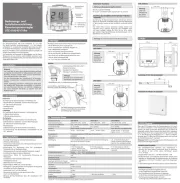
6 September 2024
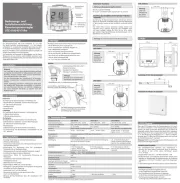
6 September 2024
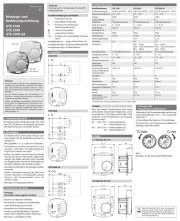
6 September 2024

22 Augustus 2023

22 Augustus 2023

22 Augustus 2023

22 Augustus 2023

22 Augustus 2023

22 Augustus 2023

22 Augustus 2023
Handleiding Thermostaat
- HQ
- Hunter
- Avidsen
- Watts
- RWE
- Worcester-Bosch
- Renkforce
- Braeburn
- Heatmiser
- Itho
- Eqiva
- Brink
- Fantini Cosmi
- ELV
- Elan
Nieuwste handleidingen voor Thermostaat
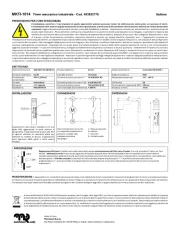
2 September 2025
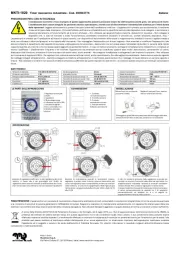
1 September 2025
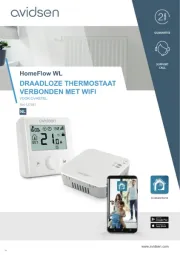
30 Augustus 2025
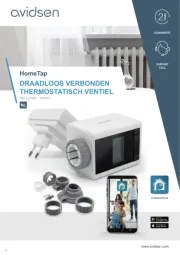
30 Augustus 2025
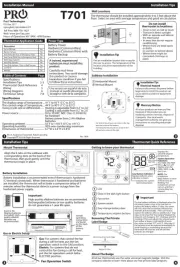
26 Augustus 2025
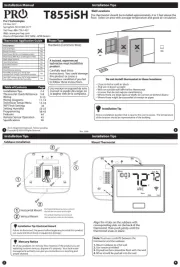
26 Augustus 2025
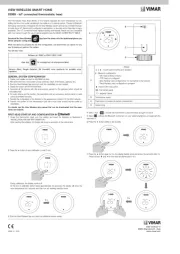
26 Augustus 2025
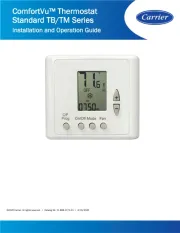
26 Augustus 2025
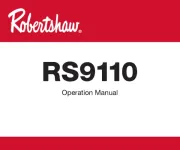
26 Augustus 2025
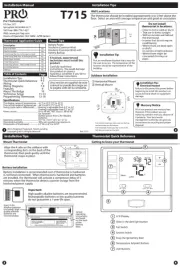
26 Augustus 2025